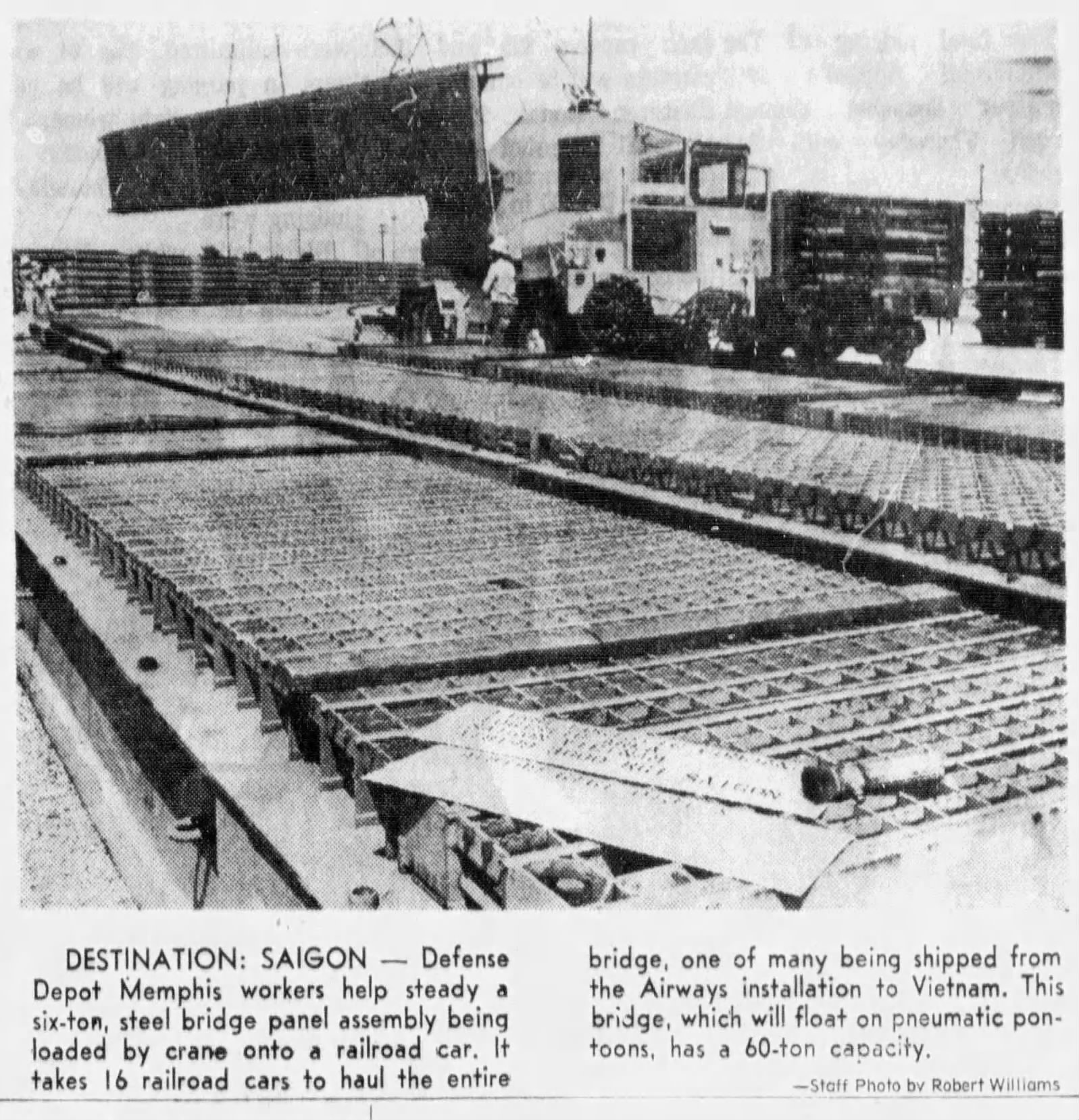Military contamination at the Memphis Defense Depot threatens our drinking water and the surrounding communities. We need more comprehensive groundwater remediation and environmental justice for neighbors.

The Memphis Defense Depot was a military distribution warehouse during World War II. It opened in 1942 and was operated well into the 1990s by the Quartermaster Corps. They procured, stored, and issued "everything but the weapons" to troops overseas. With rail yards to the north and east and the airport to the south, it was strategically located to move materials. And move, it did! At its peak, the Memphis Defense Depot moved over 100,000 items per month.
The supplies that it processed and distributed ranged from clothing and medical equipment to petroleum, lubricants, and hazardous chemicals. It even had a coffee roasting plant onsite, processing about a million cups of coffee per day! From 1943-1943, it housed 2,000 Italian and German Prisoners of War, who labored in the cotton fields and warehouse onsite. In May 1943, 300 German Prisoners of War even helped fight flooding on the Mississippi River, saving multiple acres of land.

Such a facility produced a lot of waste. Dunn Field became a dumping area just off of the railroad. Waste included leaky drums of oil and thinners, pesticides, and hazardous chemicals. In 1946, twenty-nine 500-pound Nazi mustard gas bombs en route to Pine Bluff, Arkansas for military study started leaking. They were buried at Dunn Field. In April 1955, soldiers dumped unused Chemical Agent Identification Sets, or small glass ampoules filled with “diluted mustard, lewisite, chloropicrin, and phosgene," into Dunn Field. In 1985, a cargo plane crashed into a building onsite and the debris was buried at Dunn Field, too. This legacy of dumping continued until the closure of the facility in 1997.
The Defense Depot was declared a Superfund site in 1992 after residents spent years reporting hazardous dumping activity and health problems in the communities surrounding the site. Prior to 1992, neighborhood activists in the predominantly-black neighborhood were largely ignored by officials. It was the USGS Study of the Memphis Sand Aquifer in 1990 that finally brought attention to the site, identifying breaches in our Aquifer’s clay layer for the first time near hazardous Dunn Field.
.jpg)
The Memphis Defense Depot is a Superfund Site in South Memphis where decades of military dumping have contaminated the earth and groundwater. Toxic chemicals identified onsite include chlorinated solvents (tetrachloroethylene (PCE), trichloroethylene (TCE), and dichloroethene (DCE)), benzene, chloroform, carbon tetrachloride, the pesticide dieldrin, polychlorinated biphenyls (PCBs), polycyclic aromatic hydrocarbons (PAHs), lead, arsenic, chromium, and, most recently, per- and polyfluoroalkyl substances (PFAS). Remediation by the EPA has been ongoing since 1998, including the removal of contaminated soil, extraction of the buried mustard gas bombs, bioremediation of the groundwater in the shallow aquifer, and a “pump and treat” groundwater remediation effort.
Today, most of the remediation work is complete, though groundwater monitoring wells onsite identified a PCE plume of contamination in the shallow aquifer spreading toward the adjacent neighborhood to the northeast of Dunn Field, just under Person Avenue and Glory Circle Drive. Monitoring wells drilled right above the clay layer breach onsite have also shown PCE and TCE moving toward the breach and into the Memphis Sands.

Meanwhile, a “Depot Redevelopment Board” was formed in 1995, aiming to redevelop the land. Thanks to the continued advocacy of neighbors and the “Defense Depot Memphis, TN Concerned Citizens Committee,” a plan was written to ensure revenue from redevelopment of the land would go to the neighborhoods surrounding the Depot who bore the burden of legacy pollution and economic distress associated with its closure.
Unfortunately, more than $10 million of funds were siphoned from the board and into other development projects across the city through grants and forgiven loans. In 2021, the Depot Redevelopment Board was absorbed by the Economic Development Growth Engine for Memphis (EDGE) Board. To date, only $2,500 in funds have actually made it to the neighborhoods surrounding Defense Depot.
Protect Our Aquifer aims to ensure that groundwater monitoring continues onsite and that remediation efforts are seen to completion. In May 2022, we submitted a public comment on the Superfund Site’s latest Five-Year Review. We identified contaminants at nearby MLGW drinking water wells in the Allen Wellfield and urged them to expand groundwater investigations to track those contaminants and any potential connection to Defense Depot. We also argued for investigation of the PCE plume moving towards the neighborhood to the northeast of Dunn Field. And, we made the case for a new health study in the area to inform ongoing community activism around environmental justice for the area.
POA will continue to monitor remediation actions, hold responsible parties accountable, and support neighborhood advocacy for long-overdue reparations.

The Defense Depot Information Repository is a major resource - it is maintained by the Army Corps and has hundreds of documents dating back to 1946. Everything from newspaper clippings to Remedial Workplans to monthly meeting minutes is archived on that site. Check it out for some deep research.
In 2022, The Margin published "We Glow in the Dark," an excellent article that tells the story of the Depot and the activists who have fought against it.
In the POA Defense Depot Archive, access all EPA Superfund documents, including the original Record of Decision from 2001 and the fourth 5-year report from 2018. You can also read our public comment letter on that report, submitted in 2022.
The latest report was published in November 2023 and overviews the threat of PFAS at the Depot. Check that report out for the latest data collected onsite.
Or, go crazy with the data and read the latest annual groundwater monitoring report released in 2022 by HDR and the Army Corps, who manage the Superfund Site. With a whopping 16,890 pages of data, the report makes for a great beach read!